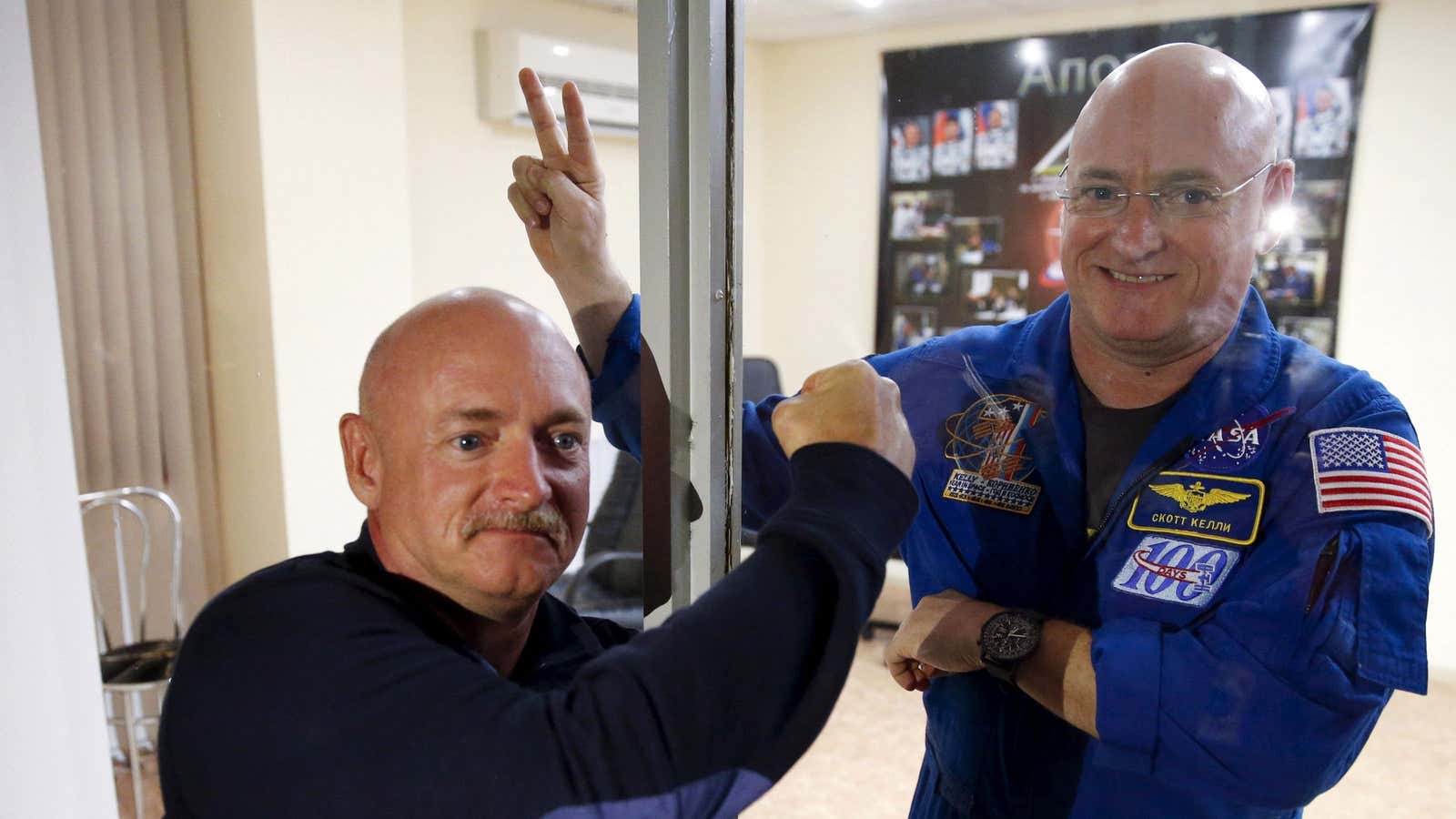Scientists have sent hundreds of humans (and several animals) into space. Most of these missions have been relatively short—the longest space flight ever was around 15 months, conducted by Russian cosmonaut Valery Polyakov over two decades ago. As a result, scientists don’t have a lot of data on the physiological changes that happen to the body after extended periods of time in space.
On April 11, a team of scientists reported (paywall) some of the most comprehensive data on the physical changes that occur when the body stays in space for about a year. The work concluded that indeed, human physiology adapts to the new environment, and largely re-conforms to life on Earth once it returns.
Space is harsh. On Earth, we’re accustomed to the snug tug of gravity and the blanket of radiation protection from the atmosphere. Without gravity, our bones and muscles, which no longer have to support the body, weaken. The eyes seem to change shape, too (although it’s not clear why), and the combination of radiation and emotional stress of space travel even affect which parts of our genome are open for our cells to read.
For this paper, a team of dozens of researchers from NASA and several US-based institutions used physiological data from Scott Kelly, an American astronaut who spent 340 days aboard the International Space Station from 2015 to 2016, and his brother, Mark, who remained on Earth. Scott and Mark are identical twins, which means they’ve got essentially the same genetic material, making Mark a great control for the experiment.
Each brother collected blood, urine, and stool samples, while taking tests to assess things like their cognitive abilities and eye shape. Researchers spent the next three years analyzing any differences they could find. Sure enough, Scott’s body underwent a number of changes in space. Some were expected, like his eyes changing shape. But scientists also observed that his immune system was also working harder, he performed better on cognitive tests, the composition of his gut microbiome shifted, and some of his cells showed signs of reverse aging while in space. Telomeres, the part of our DNA that shorten with time, actually grew in space. (Scientists suspect that this may have been the results of his cells working overtime to protect themselves from extra radiation damage.)
“When we go into space and experience microgravity and travel at speeds like 17,500 miles an hour, our bodies adapt and continue to function and, by and large, function extremely well,” Steven Platts, deputy chief scientist for NASA’s Human Research Program, told CNN.
Upon returning to Earth, Scott’s body mostly reverted back to the way it had been previously, similar to Mark’s; his telomeres began shrinking within 48 hours of landing. The readjustment was difficult—his body ached under the pull of gravity again, for example.
However, some changes remained permanent six months later: A fraction of Scott’s genes were still read differently by his cells, and his cognitive abilities were worse (although this could be a result of readjusting to a busy Earth schedule).
As a sample size of two, Scott and Mark Kelly can’t provide definitive answers. Each astronaut is as unique as her genome, and will therefore have her own reaction to life in space. But knowing that changes occur sets the stage for future research into what would happen to the body on longer missions, like trips to Mars.
Looking for more in-depth coverage of space? Sign up for a free trial of Quartz membership, and read our premium field guide on the future of the lunar economy.
